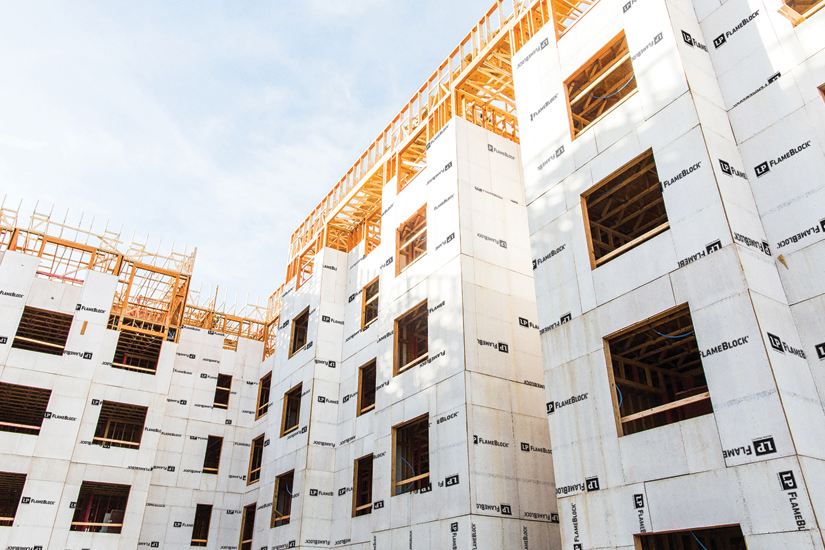Story at a glance:
- Radiant barriers installed in attics reduce summer heat gain, thereby lowering cooling costs by up to 39%.
- The reflective surface of the LP TechShield radiant barrier blocks up to 97% of radiant heat in attics.
- Radiant barriers work more effectively in hot climates vs cool climates.
Heat waves are occurring more often and for longer in major US cities, according to the US Global Change Research Program, increasing over the last 50 years from an average of two to six annually with the average heat wave season stretching 49 days longer in that time period.
Fortunately, green designers and builders have several strategies to reduce higher temperatures in structures caused by solar radiation. One of them is through radiant barriers in attics.
Here, let’s explore how useful radiant barriers are in resilient design.
What is a Radiant Barrier?
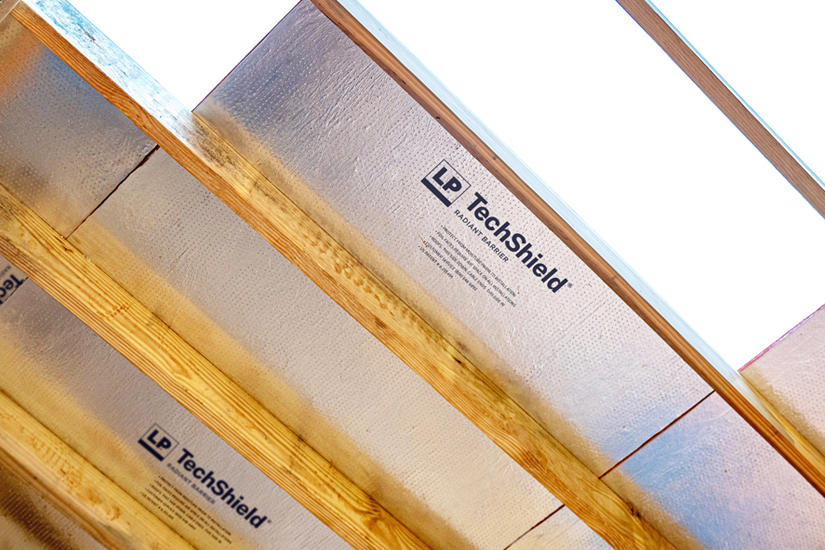
Radiant barriers are highly reflective building products used to reduce summer heat gain. Photo courtesy of LP Structural Solutions
A radiant barrier is made of a highly reflective material—such as aluminum—attached to a substrate material such as plastic or cardboard. It could also be a facing material on an insulation panel.
Radiant barriers reflect solar radiant heat instead of absorbing it. In attics, they lessen radiant heat transfer from the underside of the roof to the other surfaces in the attic, such as the floor above your living spaces.
Since these barriers perform the best when their two sides differ significantly in temperature, open attic air ducts bringing up cooler air from lower levels of buildings is preferable.
Radiant barriers reduce summer heat gain and lower cooling costs by up to 39% in hot climates. Radiant barriers are not as effective in cold regions. Instead, additional thermal insulation would be more advantageous.
How is a Radiant Barrier Part of a Resilient Design?
The USGBC defines resilience as the “ability to prepare and plan for, absorb, recover from, and more successfully adapt to adverse events.”
The use of radiant barriers in a building design enables the reflection of solar radiant heat in prolonged and extreme heat waves represents a successful adaptation to the heat-related adverse events of the climate crisis.
When viewed in this way, using radiant barriers as part of a resilient design strategy promotes sustainability. In fact, we can say resilient design principles are an integral part of green buildings and design.
Where is a Radiant Barrier Best Used?
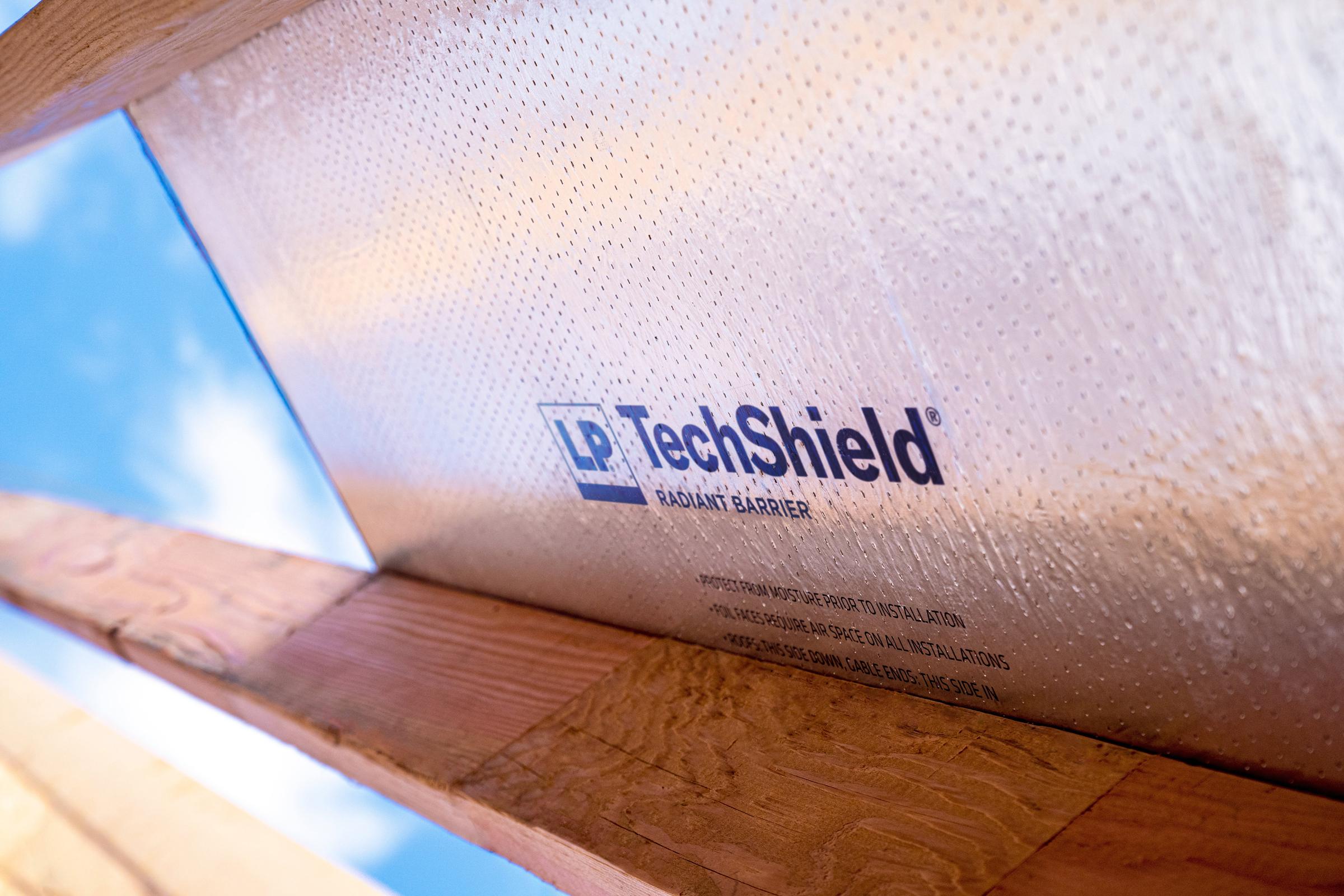
Radiant barriers—like LP Structural Solutions’ TechShield—are most effective when installed in a home’s attic. Photo courtesy of LP Structural Solutions
A radiant barrier is best used in a home’s attic that is subjected to the solar radiation impinging on the roof the entire day.
“The LP TechShield Radiant Barrier, for example, boasts impressive energy efficiency, helping to block radiant heat in roof panels from emitting into a home’s attic. This can reduce attic temperatures by up to 30°F…Backed by a 20-year transferable limited warranty, LP TechShield panels block up to 97% of radiant heat, which can translate to lower energy bills,” Jeff Yelle, director of OSB/EWP Technology for LP Building Solutions, wrote in a earlier article for gb&dPRO.
“The features of LP® TechShield® Radiant Barrier prevent the majority of radiant energy from entering into the attic space. The aluminum surface of LP TechShield panels has a very low emissivity, meaning that as the panel heats up only about 3 to 5% of that energy is emitted or radiated off the surface into the interior attic space,” Yelle elaborates in another gb&d article.
Similarly, radiant barriers would lessen the impact of solar radiation on the walls of buildings in desert states such as heat-battered Arizona and Nevada since they are exposed to direct sun rays and elevated temperatures for most of the year.
Lastly, regions experiencing repeated heat domes, such as California and the Pacific Northwest, radiant barriers may attenuate the blistering effects of solar radiation.
“If you’re building in hot climates that deal with heat for large portions of the year, radiant barriers become even more crucial. Radiant barriers can help make a noticeable difference in homes that experience high heat, taking pressure off a home’s HVAC system for cooling,” Yelle states.
Examples of Radiant Design in Projects
Radiant design in green buildings may include radiant systems, high-performing envelopes, and numerous passive features such as radiant barriers, external shading, daylighting, and natural ventilation. These features sync seamlessly together to create highly energy-efficient structures.
Here are several examples of radiant design.
Passive Ventilation Systems
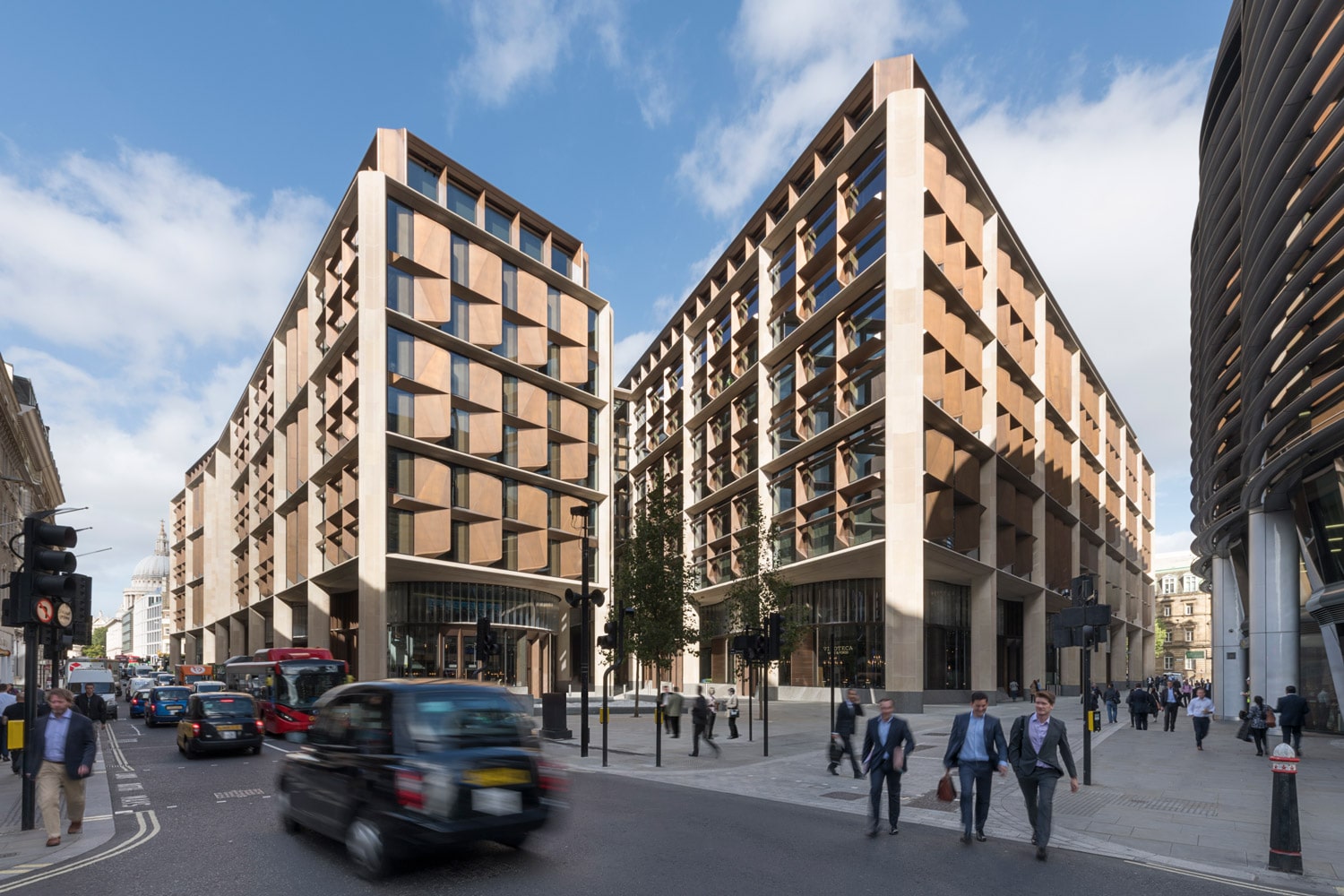
Bloomberg’s European headquarters, designed by Foster + Partners, employs an active ventilation facade that helps facilitate natural airflow. Photo by Nigel Young
Passive ventilation (natural ventilation) refers to the continuous cycle of air into and out of an indoor space without the aid of mechanical devices or systems. Natural ventilation reduces annual air conditioning energy consumption up to 30%.
The ““breathable” facade of the northern building of Bloomberg’s European office headquarters in London, designed by Foster + Partners in collaboration with Wirth Engineering and Breathing Buildings is an example of natural ventilation. “People respond better to environments that change, that ebb and flow with the temperature and sounds and light,” Michael Jones, project architect and senior partner at Foster + Partners, previously told gb&d. “The breathable walls are like opening a window at home. You feel better. It’s the same kind of effect on a much larger scale.”
Daylighting
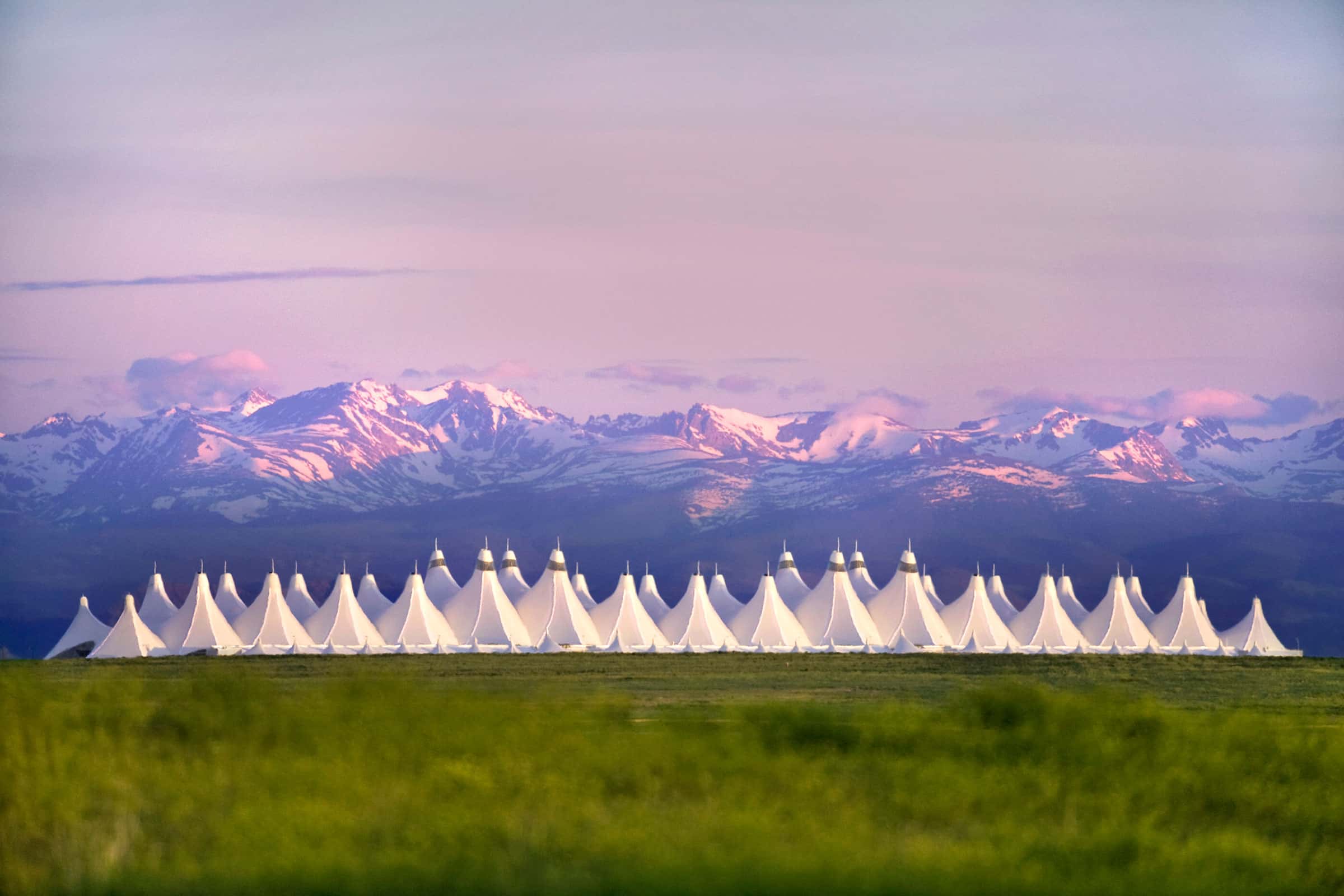
Denver International Airport’s iconic roof is a Teflon-coated fabric, stretched into a fluid and symbolic form that captures the West’s pioneering spirit, culture, and ecology. The translucent roof material reflects up to 90% of solar heat gain while allowing 10% of sunlight to pass through for natural daylighting. Photo by Ellen Jaskol
Daylighting is a term for a passive radiant design involving windows and skylights to illuminate a building’s interior using natural sunlight. “By exposing your body to daylight throughout the day, your healthy human circadian rhythm will have a significant role in regulating your sleep-wake cycle and have a positive influence on your eating habits and digestion, body temperature, hormone release, and other important bodily functions,” Neall Digert, vice president of innovation and market development at Kingspan Light + Air, previously wrote for gb&dPRO.
Daylighting can reduce a structure’s energy consumption by up to 60%. Kingspan Light + Air and Solatube offer a range of energy-efficient daylighting solutions such as Solatube’s innovative tubular devices that allow windowless rooms to benefit from natural sunlight.
Hydronic Radiant Systems
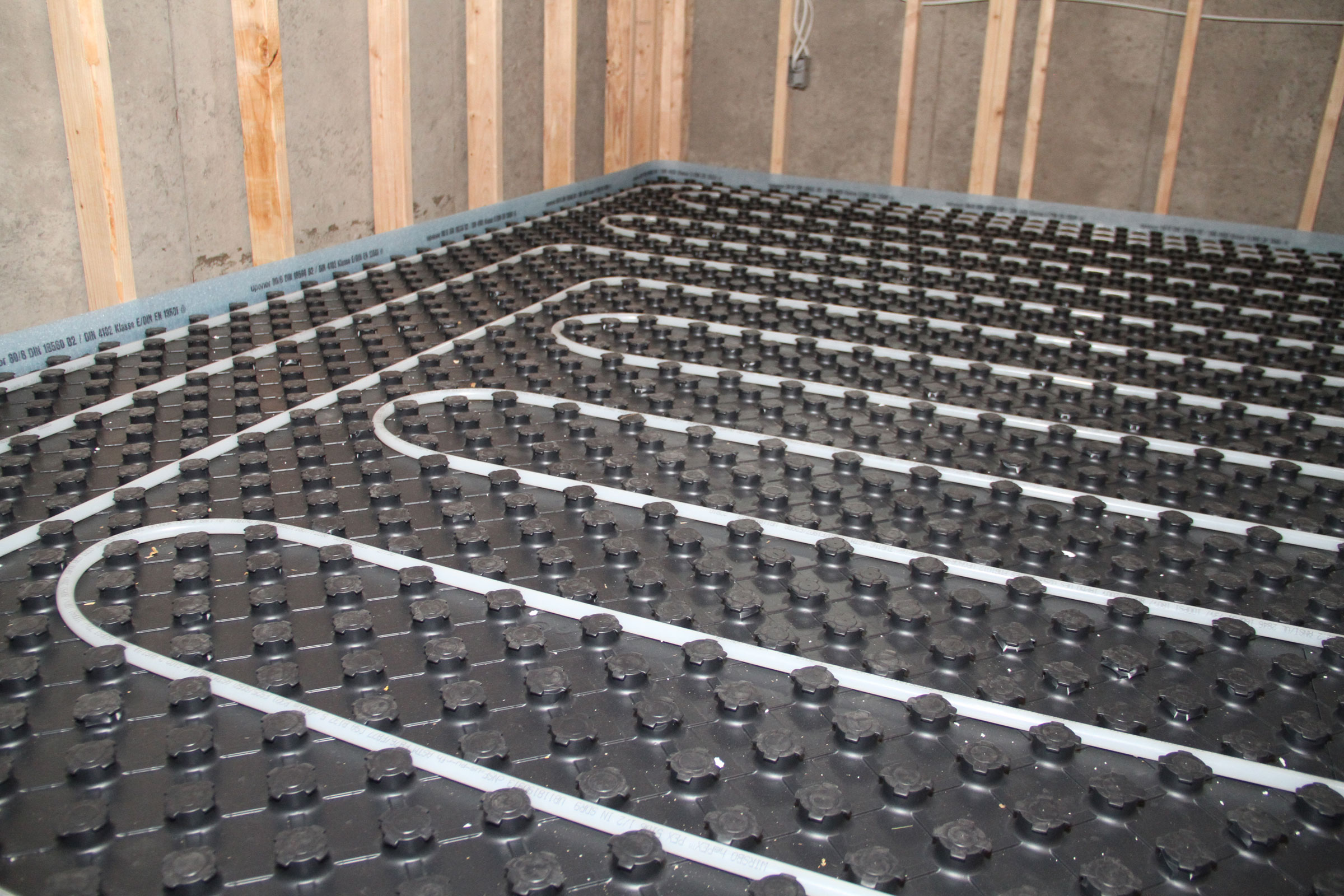
Hydronic radiant floor systems not only promote cleaner indoor air, but also boast a higher energy efficiency than standard air heating systems. Photo courtesy of Uponor
Hydronic (liquid) systems are popular and cost-effective radiant heating systems for cold climates. In hydronic radiant floor systems, warm water flows through flexible plastic tubing embedded in the slab or subfloor. “Because hydronic radiant heating systems use pumps to move water instead of fans or blowers to push air, the system does not circulate viruses, allergens, or odors throughout the indoor space,” Kim Bliss, content development manager at Uponor, previously told gb&d.
“In addition to benefits in air quality, hydronic radiant floor heating systems also do not require ductwork, so they provide greater architectural freedom for building design, including expansive ceilings with open spaces.”
How to Install Radiant Barriers
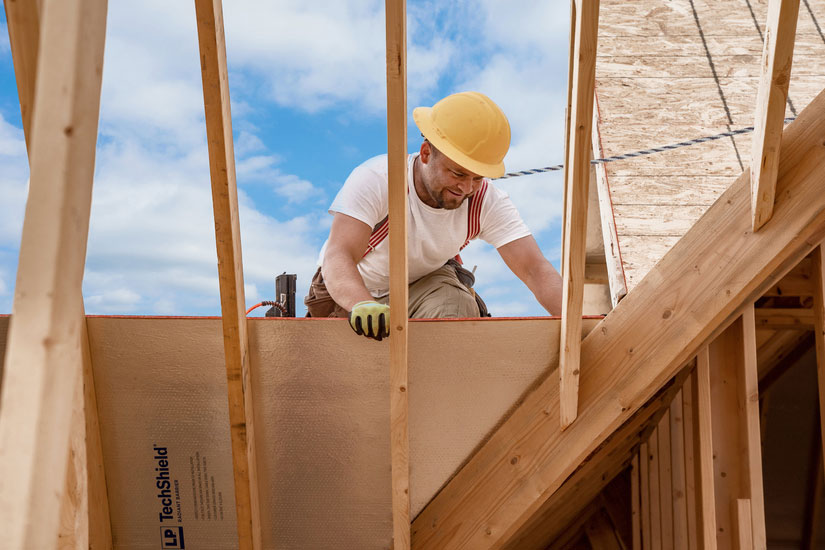
Photo courtesy of LP Structural Solutions
When installing radiant barriers, there are a few things to keep in mind for optimal performance.
- A radiant barrier should be oriented perpendicularly to the incoming solar rays striking it.
- The reflective surface must face an open air space. So, allow the barrier material to “droop” approximately one inch away from the roof between stapled or nailed attachment points.
- Applying a radiant barrier to plywood or OSB sheathing may make it easier to ensure there’s adequate air space between it and the roof.
- Since dust accumulation on the reflective surface will reduce its performance, make sure the roof surface facing it is dust-free before attaching it.
- It’s not a good idea to place a radiant barrier on top of attic floor insulation. There, it will attract dust. It may also trap moisture in cellulose or fiber insulation, which could lead to mold.
Benefits of Radiant Barriers
There are numerous benefits to radiant barriers. Here are a few major ones:
- Reduce summer heat gain
- Conserve energy
- Lower energy costs
- Install easily
- Are inexpensive yet effective

